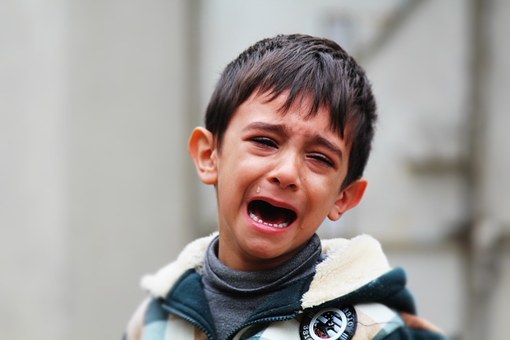Pink Eye in Children

Pink Eye in Children
Pink Eye in ChildrenYour child complains that something is in his eye, but upon close inspection, you can't see a thing. He continues to rub his eye, which is red and weepy. Your child has conjunctivitis, commonly known as pinkeye. Conjunctivitis is the most common eye disease in the U.S. and is highly contagious for as long as visible evidence of the infection lasts.
What, Exactly, Is Pinkeye?
The contagious type of pinkeye, or conjunctivitis, is caused by a bacterial or viral infection. This infection inflames the conjunctiva, which is the lining of the eyelid and eye surface. The causative bacteria or virus is spread through human contact of many types, improperly cleaned contact lenses, or other inadvertent introduction of contaminants into the eye. Swimming in overly chlorinated water, allergies, or other chemical irritants can cause a non-contagious inflammation of the conjunctiva.
Where Did My Child Get Pinkeye?
The disease spreads quickly through a family and among children who spend time together at school, daycare, or other group events. It spreads easily from one eye to both through contact with contaminated fingers that have rubbed the infected eye. It then spreads to others through hand-to-hand contact with an infected person; using a towel that an infected person recently touched; or other contaminated vector.
Some Quick Statistics
As of 2005, researchers estimated that 1 in 9 kids contract pinkeye annually. For those under the age of 4, 1 in 5 contract pink eye each year. Consider that, because of the highly contagious nature of the disease, a good many of the adults that have contact with these children will also contract pinkeye and it is easy to see why it is the most common eye ailment in the U.S.
Does My Child Need to See the Pediatrician?
It's hard to know when a visit to the pediatrician is warranted. You don't want to make unnecessary appointments, but your child is in pain and you're worried about permanent eye damage. Below are some reasons to seek immediate advice of a physician:
Your child has a change in vision
He has difficulty keeping the eye open or it is glued shut from dried discharge
Your child wears contact lenses
Eyelid is swollen significantly and a fever is present
Child complains of severe headache or nausea
Yellow or green discharge is present (discharge from viral infections is usually whitish or clear
Viral Conjunctivitis
Most cases of pinkeye are viral in nature, the usual culprit being the adenovirus; therefore, antibiotics, which only work against bacteria, are ineffective. Viral cases usually resolve on their own, but cause great discomfort and irritation, prompting many parents to seek some sort of relief from their child's pediatrician. He can perform a quick 10-minute test for adenovirus to confirm viral infection. If your child is highly agitated by the infection, he may prescribe drops that will ease the discomfort until the syndrome resolves. You can help by applying warm or cool compresses to the eye to ease the symptoms and calm your child. Some schools or daycares may require that your child stay home for a week or more to prevent a localized epidemic.
Bacterial Conjunctivitis
A much more serious disease, children with bacterial conjunctivitis should see a pediatrician as soon as possible. Almost any bacteria introduced into the mucous membrane of the eye can cause the infection, but bacterial infections are most commonly caused by the H. influenzae bacterium, which may also cause an adjunct ear infection, and the S. pneumoniae bacterium. If the pediatrician determines that the infection is bacterial, he will prescribe antibiotic ophthalmic drops.
Preventing the Spread of Pinkeye
Parents of children with pinkeye should thoroughly wash hands after applying drops or compresses to infected children. Antibacterial soap is not necessary. Keep a pump bottle of alcohol-based hand cleanser handy in family rooms and kitchen. Contaminated family members should cleanse hands after touching eyes, sneezing, or coughing. Do not share bedding, towels/washcloths, tissues, eye drops (get a separate bottle for each infected family member).
http://www.articlesbase.com/diseases-and-conditions-articles/pink-eye-in-children-3594738.html Cheap Baby Clothes Online and a Free Kids Size Chart When No Other Options Exist: 5 Tips for Creating a Play Date for Your Kids The Effects of Domestic Violence in Children Giant Stuffed Plush and Selling Toys around the World Hello Kitty Invitations For Kids' Parties Sesame Street Invitations For Children's Parties Aromatherapy and Children Huge Plush Stuffed Animal and the Beginning of Soft Toys Buying discount children's clothes: Learn how to save bucks Large Plush Toys and the Most Famous of all Teddy Bear's Diabetes in Children: A Growing Epidemic Stuffed Giant Toys and The Teddy Bear Industry in The U.S Tres Bien! Learn French With Your Kids!